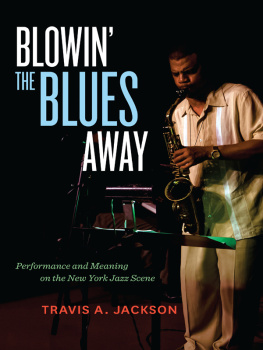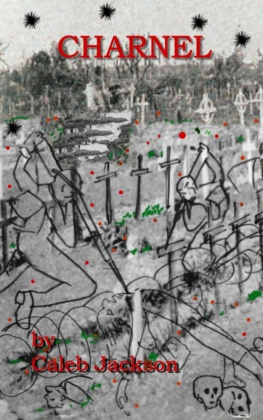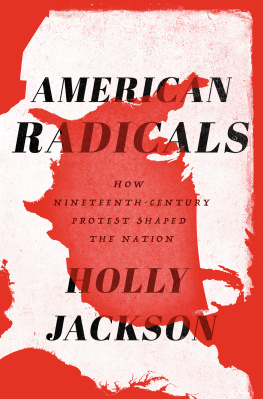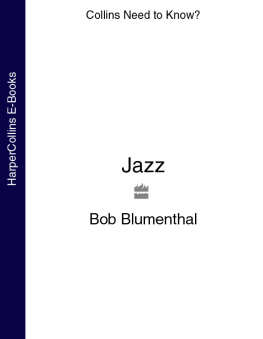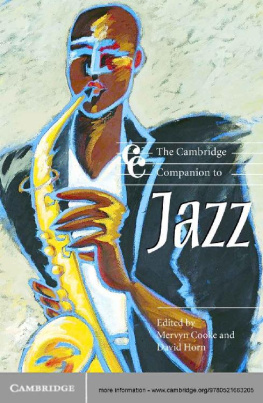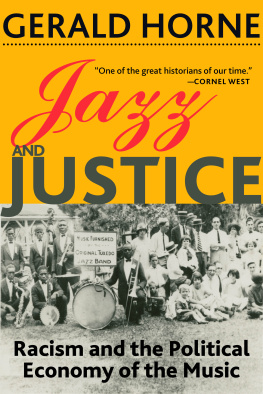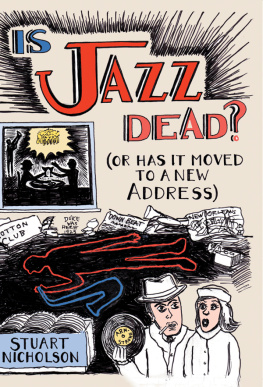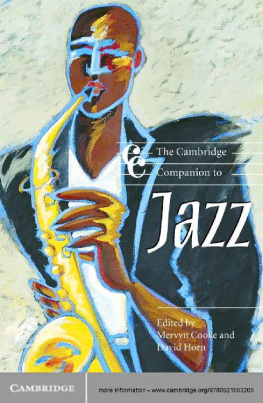
Michael P. Roth
and Sukey Garcetti
have endowed this
imprint to honor the
memory of their parents,
Julia and Harry Roth,
whose deep love of music
they wish to share
with others.
The publisher gratefully acknowledges the generous contribution to this book provided by the AMS 75 PAYS Endowment of the American Musicological Society, funded in part by the National Endowment for the Humanities and the Andrew W. Mellon Foundation.
Blowin the Blues Away
MUSIC OF THE AFRICAN DIASPORA
Guthrie P. Ramsey, Jr., Editor
Samuel A. Floyd, Jr., Editor Emeritus
1. California Soul: Music of African Americans in the West, edited by Jacqueline Cogdell DjeDje and Eddie S. Meadows
2. William Grant Still: A Study in Contradictions, by Catherine Parsons Smith
3. Jazz on the Road: Don Alberts Musical Life, by Christopher Wilkinson
4. Harlem in Montmartre: A Paris Jazz Story between the Great Wars, by William A. Shack
5. Dead Man Blues: Jelly Roll Morton Way Out West, by Phil Pastras
6. What Is This Thing Called Jazz?: African American Musicians as Artists, Critics, and Activists, by Eric Porter
7. Race Music: Black Cultures from Bebop to Hip-Hop, by Guthrie P. Ramsey, Jr.
8. Lining Out the Word: Dr. Watts Hymn Singing in the Music of Black Americans, by William T. Dargan
9. Music and Revolution: Cultural Change in Socialist Cuba, byRobin D. Moore
10. From Afro-Cuban Rhythms to Latin Jazz, by Raul A. Fernandez
11. Mek Some Noise: Gospel Music and the Ethics of Style in Trinidad, by Timothy Rommen
12. The Memoirs of Alton Augustus Adams, Sr.: First Black Bandmaster of the United States Navy, edited with an introduction by Mark Clague, with a foreword by Samuel Floyd, Jr.
13. Digging: The Afro-American Soul of American Classical Music, by Amiri Baraka
14. Different Drummers: Rhythm and Race in the New World, by Martin Munro
15. Funky Nassau: Roots, Routes, and Representation in Bahamian Popular Music, by Timothy Rommen
16. Blowin the Blues Away: Performance and Meaning on the New York Jazz Scene, by Travis A. Jackson
Blowin the Blues Away
Performance and Meaning on the New York Jazz Scene
Travis A. Jackson

UNIVERSITY OF CALIFORNIA PRESS
Berkeley Los Angeles London
University of California Press, one of the most distinguished university presses in the United States, enriches lives around the world by advancing scholarship in the humanities, social sciences, and natural sciences. Its activities are supported by the UC Press Foundation and by philanthropic contributions from individuals and institutions. For more information, visit www.ucpress.edu.
University of California Press
Berkeley and Los Angeles, California
University of California Press, Ltd.
London, England
2012 by The Regents of the University of California
Early versions of portions of appeared as Jazz Performance as Ritual: The Blues Aesthetic and the African Diaspora in The African Diaspora: A Musical Perspective, ed. Ingrid Monson, 2382 (New York: Garland, 2000).
Library of Congress Cataloging-in-Publication Data
Jackson, Travis A.
Blowin the blues away : performance and meaning on the New York jazz scene / Travis A. Jackson.
p. cm. (Music of the African diaspora)
Includes bibliographical references and index.
ISBN 978-0-520-27044-2 (cloth : alk. paper) ISBN 978-0-520-27045-9 (pbk. : alk. paper)
1. JazzNew York (State)New YorkHistory and criticism. I. Title.
ML3508.8.N5J33 2012
781.6509747109049dc23
2011042263
Manufactured in the United States of America
20 19 18 17 16 15 14 13 12
10 9 8 7 6 5 4 3 2 1
In keeping with a commitment to support environmentally responsible and sustainable printing practices, UC Press has printed this book on 50-pound Enterprise, a 30% post-consumer-waste, recycled, deinked fiber that is processed chlorine-free. It is acid-free and meets all ANSI/NISO (Z 39.48) requirements.
To Lawrence Jackson Sr. and to the memory of Sherryl L. Jackson, Rev. Chalmers Jackson Sr., and Robert Thomas Hodgeeach of whom opened a way for me
Contents
Illustrations
FIGURES
. Typical progression of events in a tune
. Frames around jazz performance
. Twelve-bar blues in F
. Arrangement of musicians in the Power Station, Studio A
. Arrangement of musicians, RPM Sound Studios, 10 December 1994
. Arrangement of musicians, RPM Sound Studios, 17 December 1994
TABLES
. Analytic Approaches
. Structural Diagram: Saxophone Duet on Js Rhythm Song
. Progression of events in Perdido
Acknowledgments
Although the cover and title page indicate that this book has one author, it is in fact the result of a wide-ranging series of relationshipswith musicians, colleagues, friends, and familyspanning a life, several cities, and three academic institutions. Indeed, the number of intellectual and spiritual gifts I have received over that time and in those places has left me with an obligation to reciprocate that I will fulfill gladly, though many of my return gifts, sadly, will be prestations to the universe rather than to those who shared with me their time and their perspectives, who let me into their worlds, and who gave me their support.
In particular, it saddens me that neither Mark Tucker, one of my stalwart supporters during my time at Columbia University and afterward, nor James Williams, who saw potential in my work and opened doors for his fellow Tennessean, lived to see this book published. Both of them, prematurely felled by cancer, were the kinds of people, as the clich goes, one doesnt meet every day. Eminently skilled and widely esteemed in their respective fields, they both exhibited a capacious humanity, trying always to make the world a better place for those around them. I doubt that any of this books merits would be what they are without their profound influence.
Equally important are the musicians who, in sometimes only fleeting conversations, made observations or shared insights that turned my head just enough to make me see things in fresh and productive ways. I mention most of them by name throughout this book, listing them prominently in . Bruce Barth, Peter Bernstein, Antonio Hart, Sam Newsome, Leon Parker, and Steve Wilson were especially helpful. They invited me into their homes and to their recording sessions and their gigs, even after my fieldwork was done. Like James Williams, they had little to nothing to gain from me, but they offered me nearly everything via their candid, thoughtful responses and their friendship. To this day, seeing them perform on my returns to New York City or when they are touring as leaders or sidemen remains a revelatory delight for me.
In addition to the musicians, my scholarly interlocutors have contributed immensely to the style and substance of this book. At the University of Michigan I had the pleasure of sharing ideas about music making and scholarship with a broad range of individuals affiliated with the School of Music, the American Culture Program, the Atlantic Studies Initiative, and the Center for Afroamerican and African Studies. In particular, the research support provided by former dean of the School of Music, Paul Boylan, and by senior vice-provost for Academic Affairs, Lester P. Monts, was crucial in this projects early stages. My colleagues in Music History and Musicology, the School of Music, and the Music in the United States of America project officeincluding Naomi Andr, Gregory Barnett, Judith Becker, James Borders, Evan Chambers, Mark Clague, David Crawford, Hugh de Ferranti, Joseph Lam, Beth Levy, Stefano Mengozzi, Marcello Piras, Gillian Rodger, Louise Stein, Amy Stillman, Steven M. Whiting, and Roland John Wileyprovided as nurturing an environment as any junior professor might have desired. Likewise, my conversations with varied performance facultyGerald Cleaver, Ellen Rowe, Ed Sarath, and the late Donald Waldenhelped to keep me anchored in the particulars of music making even as I made my way, again, through the broad and varied literature on jazz, improvisation, and American culture. I am also grateful to the Julie and Parker Hall Endowment for Jazz and American Popular Music at the University of Chicago, whose support made it possible for me to use Jack Vartoogians photograph of Steve Wilson on this books cover. Beyond there, Paul A. Anderson, Santiago Cols, Frances Aparicio, Kevin Gaines, Frank Gunderson, Sandra Gunning, Martha S. Jones, Marlon Ross, Carroll Smith-Rosenberg, Lucia M. Surez, and Penny M. Von Eschen were among my favorite interlocutors in the broader university community. A number of people who were graduate students during those years have also contributed significantly to this work. Among them are Tamar Barzel, John Behling, Kate Brucher, Charles Gentry, Mark Kirschenmann, Caroline Kovtun, LaTissia Mitchell, Shani Mott, Michal Rahfaldt, Matthew Shippee, Wilson Valentn-Escobar, and Carla Vecchiola. I am particularly indebted to Ryan Snyder Ananat and Stephanie Heriger, whose research assistance in two critical periods freed me to concentrate on writing.
Next page
